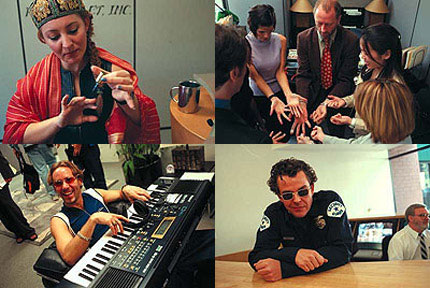In “The Database” by Lev Manovich, I was most intrigued by his argument in the section titled “Paradigm and Syntagm”. While he defines the syntagmatic dimension as “stringing together elements, one after another, in a linear sequence” (230), the paradigmatic dimension is described as the more varying possibilities for these sequences. For example, with the example he gives, in a fashion outfit, there are elements that compose it (a skirt, blouse, jacket, shoes, etc.), but there are other combinations of outfits that exist in the viewer’s imagination. The syntagm here is naturally explicit (the actual narrative), while the paradigm is implicit (the database).
He argues that new media reverses this relationship. “The database is given material existence, while narrative is dematerialized” (231). Paradigm is privileged over syntagm, made real and no longer virtual. These new media objects (e.g. images made by computers) place the database at the center of the design process. The database, in which we select components to add onto our object, is listed out and exists materially. Everything is a simple mouse-click away, and the elements are arranged in a menu, in which you can select from and construct your image accordingly. Every action has become dependent on the explicit database, and a simple narrative has been placed secondary.
But what I found the most interesting was his initial comparison of these new media objects to cinema. In the beginning of the section, he discusses these images as having layers, where combined and juxtaposed would result in a montage look. Each layer is responsible for a certain component of the image. For example, one could encompass the background, one could encompass the subject, and one could encompass the lettering. Combined, these layers present a full representation – a complete scene. Yet, if a layer stands on its own, it tells a blank story that viewers are unable to garner much information from. This is similar to the idea of cinema. Juxtaposing multiple screen shots presents a complete scene, but on its own, it is a still image that we cannot gather as much from. Here, cinema has an impact on the visual language. With these still images, they have components that can make it come alive – just as cinema makes a scene come alive. This linear sequence of layers still gives the viewers an experience on its own in visual culture, while tapping into moving images. The new media objects, especially still images with layers made in programs like Adobe Photoshop, mirror the composite of cinema – a series of disjointed scenes (comparable to different layers) that comprise of a full scene (comparable to a complete, diluted image).
This comparison made me think differently about the influence cinema may have on the visual culture in general, and how that can stem into still, computer-distorted images. It made me realize that you do not need a series of still images to alter a scene, but these mere still images can be manipulated in a way that can materialize the database while downplaying the actual narrative.
Labels: stephanie, The Database





